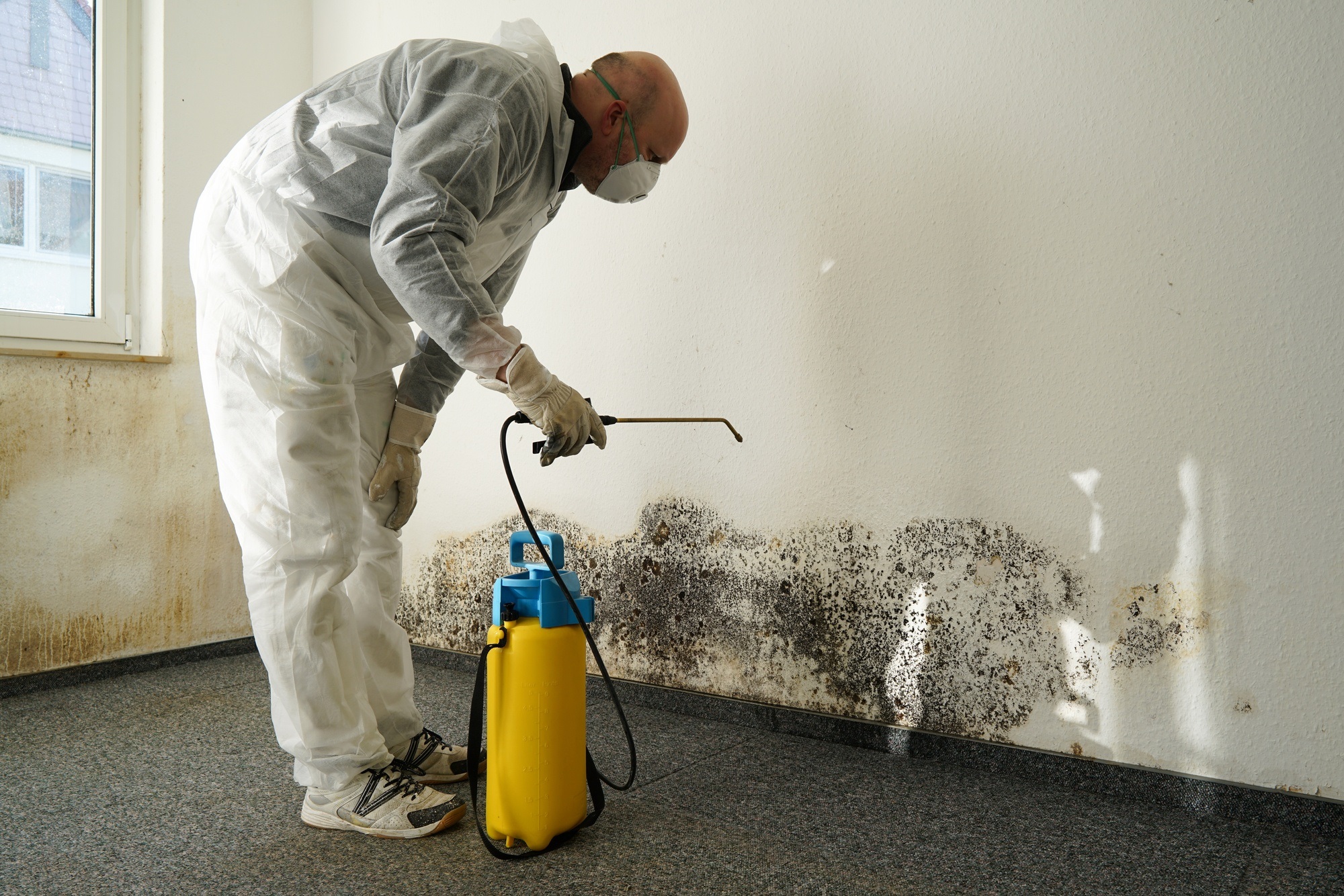Key Takeaways:
- Water damage can lead to long-term problems, including mold growth, structural damage, and health hazards.
- Common causes of water damage in Suffolk County include heavy rainfall, plumbing issues, and flooding from water bodies.
- Assess the severity of water damage to determine the appropriate actions to take.
- When choosing a water damage restoration company, consider qualities such as prompt response, expertise, licensing, comprehensive services, and insurance claims assistance.
- Before hiring a restoration company, ask questions about availability, assessment speed, equipment, and mold services, and request references.
- Check online reviews and testimonials to gauge the reliability of a restoration company.
- The water damage restoration process includes emergency response, water extraction, drying, cleaning, and sanitizing.
- To prevent water damage, regularly inspect and maintain plumbing systems, properly seal windows and doors, and consider installing a water leak detection system.
Understanding Water Damage Restoration in Suffolk County
Water damage can be a homeowner’s worst nightmare. It not only causes immediate destruction but also leads to long-term problems such as mold growth, structural damage, and even health hazards. If you are a homeowner in Suffolk County, it is essential to understand the significance of water damage restoration and how it can save your home from further deterioration.
The Dangers of Water Damage
Water damage poses various dangers to your home and your health. When water seeps into your home, it can weaken the structural integrity of your walls, floors, and ceilings. This can lead to sagging, cracking, and even collapse of these components, putting you and your family at risk. Additionally, stagnant water creates a breeding ground for mold, which can cause respiratory issues and allergies.
Furthermore, prolonged exposure to water can damage electrical systems, leading to short circuits and potential fire hazards. It is crucial to address water damage promptly to mitigate these risks and restore your home’s safety.
Common Causes of Water Damage in Suffolk County
Suffolk County is prone to various factors that can contribute to water damage in homes. One of the most common causes is heavy rainfall, especially during storms and hurricanes. Excessive precipitation can overwhelm drainage systems and result in flooding in low-lying areas.
Another significant cause of water damage in Suffolk County is plumbing issues. Leaking or burst pipes, faulty water heaters, and clogged drains can lead to significant water intrusion, affecting multiple areas of your home.
In addition, Suffolk County is surrounded by water bodies, making properties vulnerable to water damage from flooding caused by high tides or storm surges. It is essential for homeowners in this area to be aware of these potential causes and take preventive measures to minimize the risk of water damage.
Assessing the Severity of Water Damage
When faced with water damage, it is essential to assess the severity of the situation before taking any further steps. There are generally three categories of water damage:
- Category 1: Clean Water – This is water from a clean source, such as a broken pipe or a leaking faucet. It poses no immediate health risks.
- Category 2: Grey Water – This water contains contaminants and may come from washing machines, dishwashers, or toilet overflow (without feces). It can cause illness if ingested or prolonged exposure occurs.
- Category 3: Black Water – This is highly contaminated water and may contain sewage, chemicals, or pathogens. It can cause severe illness or even death if not handled properly. Black water can result from flooding or sewage backups.
By understanding the severity of the water damage, you can determine the appropriate actions to take and whether professional water damage restoration services are necessary.
Choosing the Right Water Damage Restoration Company
When faced with water damage, choosing the right restoration company is crucial for a successful recovery. Here are some factors to consider when selecting a water damage restoration company in Suffolk County:
Qualities to Look for in a Water Damage Restoration Company
- Prompt Response: Time is of the essence when dealing with water damage. Look for a company that offers emergency response services and can quickly assess and mitigate the damage.
- Expertise and Experience: Ensure that the company has a team of trained professionals experienced in water damage restoration. They should be equipped with the knowledge and skills to handle different types of water damage scenarios.
- Licensing and Certification: Verify that the company is licensed and certified by reputable organizations. This ensures that they follow industry standards and regulations in their restoration processes.
- Comprehensive Services: A reliable restoration company should provide a wide range of services, including water extraction, drying, cleaning, and mold remediation. This ensures that all aspects of the restoration process are taken care of.
- Insurance Claims Assistance: Dealing with insurance claims can be overwhelming. Look for a restoration company that can assist you in navigating the process and help you get the compensation you deserve for the damages.
Questions to Ask Before Hiring a Water Damage Restoration Company
Before hiring a water damage restoration company, it is essential to gather relevant information to make an informed decision. Here are some questions to ask:
- Are you available 24/7 for emergency situations?
- How quickly can you assess the damage and provide an estimate?
- What equipment and techniques do you use for water extraction and drying?
- Do you offer mold inspection and remediation services?
- Can you provide references from previous clients?
Reviews and Testimonials: Finding the Best Water Damage Restoration Company
One of the most effective ways to gauge the reliability and quality of a water damage restoration company is by checking reviews and testimonials from their previous clients. Online review platforms, such as Google, Yelp, and Angie’s List, can provide insights into the experiences of others who have hired the company.
Additionally, consider asking for references directly from the restoration company. Speaking to past clients can give you a firsthand account of the company’s professionalism, effectiveness, and customer service.
The Water Damage Restoration Process
Water damage restoration involves several crucial steps to restore your home to its pre-damage condition. Here is a breakdown of the typical restoration process:
Step 1: Emergency Response and Inspection
Upon contacting a water damage restoration company, they will respond promptly to assess the situation. Their team will evaluate the extent of the damage and identify the source of the water intrusion. This step is crucial to determine the appropriate course of action and develop a restoration plan.
Step 2: Water Extraction and Drying
Once the initial assessment is complete, the restoration team will proceed with water extraction to remove any standing water from your property. This is done using specialized equipment, such as pumps and vacuums.
After the water is extracted, the drying process begins. Industrial fans, dehumidifiers, and other drying equipment are used to eliminate moisture from the affected areas, preventing further damage and mold growth.
Step 3: Cleaning and Sanitizing
After the affected areas are dry, the restoration team will thoroughly clean and sanitize the space. This includes disinfecting surfaces, removing any debris or contaminants, and treating for mold if necessary.
By following these steps, a professional water damage restoration company can effectively restore your home and minimize the risk of further damage.
Tips for Preventing Water Damage in Your Home
While water damage restoration is essential in reversing the effects of water damage, prevention is always better than cure. Here are some tips to help you prevent water damage in your home:
Regularly Inspecting and Maintaining Plumbing Systems
Inspect your plumbing systems regularly for any signs of leaks or deterioration. Check pipes under sinks, around toilets, and in the basement or crawlspaces. Repair any leaks promptly and consider hiring a professional plumber for a comprehensive inspection.
Additionally, ensure that your water heater is in good condition and does not show signs of corrosion or leakage. Flushing the water heater annually can also help prolong its lifespan and prevent issues.
Properly Sealing Windows and Doors
Water intrusion can occur through improperly sealed windows and doors, especially during heavy rains or storms. Inspect the seals around windows and doors and replace any damaged or worn-out weatherstripping. This will help prevent water from seeping into your home.
Installing a Water Leak Detection System
A water leak detection system is an effective tool to help prevent water damage. These systems can detect leaks in your home’s plumbing system and immediately notify you, allowing you to take swift action before the damage worsens.
There are various types of leak detection systems available, including sensor-based systems and flow-based systems. Research and choose the one that best suits your needs and budget.
In conclusion, water damage restoration is a critical process in saving your home from the devastating effects of water intrusion. By understanding the dangers of water damage, choosing the right restoration company, and taking preventive measures, you can protect your home and ensure its long-term safety and integrity.
FAQ
Question: What can water damage lead to? – Water damage can lead to long-term problems, including mold growth, structural damage, and health hazards.
Question: What are some common causes of water damage in Suffolk County? – Some common causes of water damage in Suffolk County include heavy rainfall, plumbing issues, and flooding from water bodies.
Question: How can I assess the severity of water damage? – You can assess the severity of water damage by understanding the three categories: Category 1 (clean water), Category 2 (grey water), and Category 3 (black water). Each category has different levels of contamination and associated health risks.
Question: What qualities should I look for in a water damage restoration company? – When choosing a water damage restoration company, consider qualities such as prompt response, expertise, licensing, comprehensive services, and insurance claims assistance.
Question: What questions should I ask before hiring a water damage restoration company? – Before hiring a water damage restoration company, ask questions about their availability for emergencies, assessment speed, equipment, mold services, and request references.
Question: How can I gauge the reliability of a water damage restoration company? – You can check online reviews and testimonials on platforms such as Google, Yelp, and Angie’s List to gauge the reliability and quality of a water damage restoration company. Additionally, consider asking the company for references from previous clients.
Question: What does the water damage restoration process typically involve? – The water damage restoration process typically includes emergency response, water extraction, drying, cleaning, and sanitizing.
Question: What can I do to prevent water damage in my home? – To prevent water damage, regularly inspect and maintain plumbing systems, properly seal windows and doors, and consider installing a water leak detection system.
Useful Resources:
- https://www.epa.gov/ – Environmental Protection Agency guide on mold remediation in schools and commercial buildings.
- https://www.fema.gov/ – Federal Emergency Management Agency provides information on disaster preparedness and response.
- https://www.iicrc.org/ – Institute of Inspection, Cleaning and Restoration Certification offers resources and certifications for restoration professionals.
- https://www.cdc.gov/ – Centers for Disease Control and Prevention FAQ on mold and its health effects.
- https://www.nfpa.org/ – National Fire Protection Association provides information on fire prevention and safety.
- https://www.doityourself.com/ – DoItYourself offers tutorials and guides for various home improvement projects including water damage restoration.
- https://www.homestars.com/ – HomeStars provides customer reviews and ratings for various home service professionals.
- https://www.familyhandyman.com/ – The Family Handyman offers tips and guides for home repairs and maintenance.

